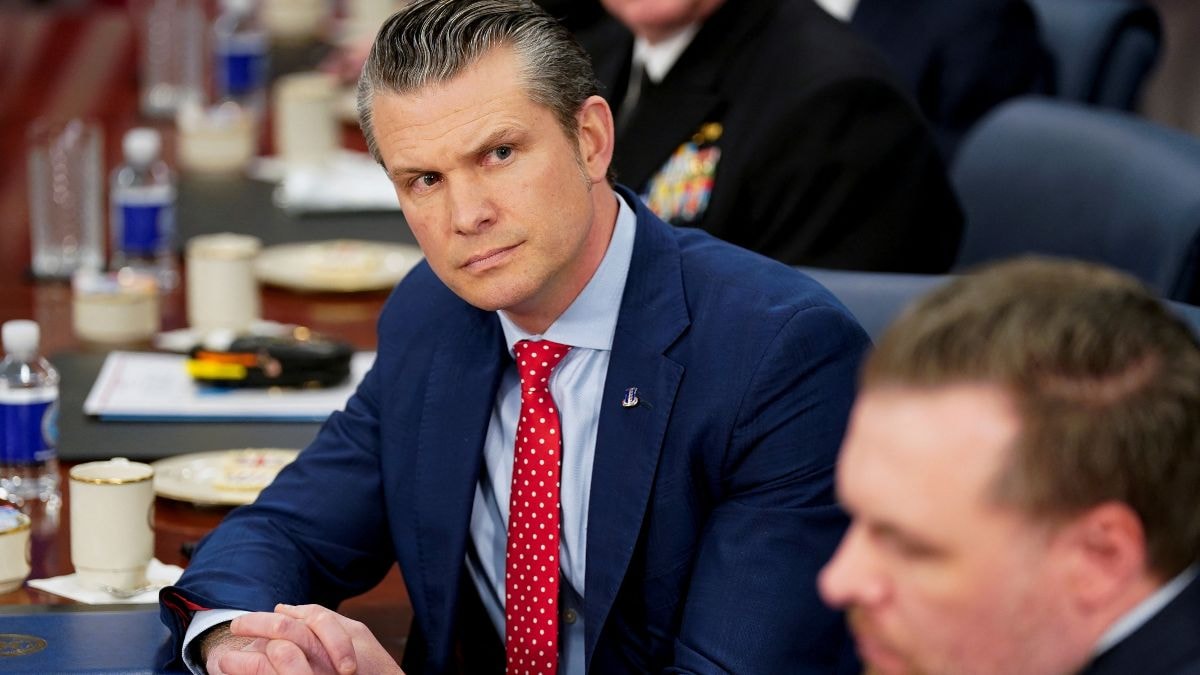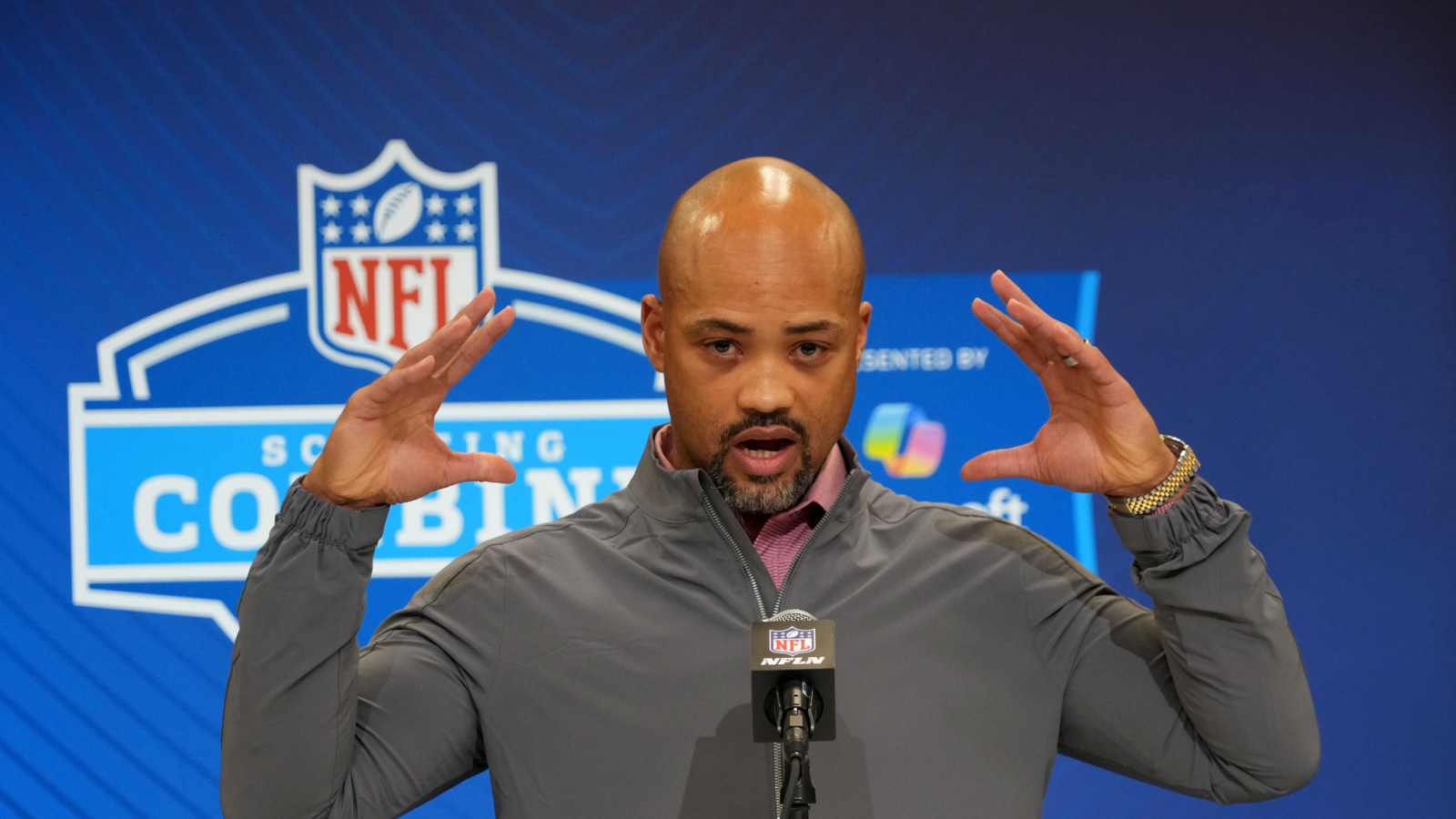White House defends Hegseth amid fresh Signal scandal, blames disgruntled employees for leaks

The administration’s stance was intended to stand firm against Democratic calls for Hegseth’s dismissal at a time when the Pentagon is in disarray, with many top officials leaving and an internal inquiry into information leaks read more The White House defended Defence Secretary Pete Hegseth on Monday, following media accusations that he disclosed vital military information in another Signal messaging discussion, this time with his wife and brother. Neither the White House nor Hegseth contested that he revealed such material in a second discussion. Instead, they focused their answers on what they referred to as dissatisfied employees who they blamed for leaking to the media and stressed that no sensitive information was released. Advertisement “It’s just fake news. They just bring up stories,” President Donald Trump told reporters. “I guess it sounds like disgruntled employees. You know, he was put there to get rid of a lot of bad people, and that’s what he’s doing. So you don’t always have friends when you do that,” Trump said. The administration’s stance was intended to stand firm against Democratic calls for Hegseth’s dismissal at a time when the Pentagon is in disarray, with many top officials leaving and an internal inquiry into information leaks. The White House also attempted to divert attention away from the national security implications of the newest Signal disclosure by presenting it as the result of an institutional power struggle between Hegseth and the professional personnel. However, several of the recently departed officials whom the administration appeared to dismiss as unhappy were members of Hegseth’s first inner circle, which was brought in when he began the post. “This is what happens when the entire Pentagon is working against you and working against the monumental change that you are trying to implement,” White House press secretary Karoline Leavitt said in remarks amplified by a Pentagon social media account. The latest news added to questions about the judgment of the embattled Pentagon chief, coming on top of last month’s disclosure of his participation in a Signal chat with top Trump administration leaders in which details about the military airstrike against Yemen’s Houthi militants were shared. “Pete Hegseth must be fired,” Senate Democratic leader Chuck Schumer said. Advertisement Latest reports of Hegseth’s Signal use The New York Times reported Sunday that the information shared in a Signal messaging chat with Hegseth’s wife, brother and others was similar to what was communicated in the already disclosed chain with Trump administration officials. A person familiar with the contents and those who received the messages, who spoke on condition of anonymity to discuss sensitive matters, confirmed the second chat to The Associated Press. The person said it included 13 people and was dubbed “Defense ’ Team Huddle.” White House officials first learned of the second Signal chat from news reports Sunday, according to an official familiar with the matter who spoke on the condition of anonymity to discuss internal conversations. Hegseth, talking to reporters while attending the White House Easter Egg Roll, didn’t address the substance of the allegations or the national security implications they raised but assailed the media. “They take anonymous sources from disgruntled former employees and then they try to slash and burn people and ruin their reputations,” Hegseth said. “Not going to work with me. Because we’re changing the Defense Department, putting the Pentagon back in the hands of warfighters. And anonymous smears from disgruntled former employees on old news doesn’t matter.” Advertisement Republican Sen. Tom Cotton, chairman of the Senate Intelligence Committee, struck a similar tone, writing on Sunday night on X: “Secretary Hegseth is busy implementing President Trump’s America First agenda, while these leakers are trying to undermine them both. Shameful.” The Trump administration’s response on the use of Signal The Trump administration has struggled in its public explanations about senior officials’ use of Signal, a commercially available app not authorized to be used to communicate sensitive or classified national defense information. The first chat, set up by national security adviser Mike Waltz, included a number of Cabinet members and came to light because Jeffrey Goldberg, editor-in-chief of The Atlantic, was added to the group. Officials have repeatedly insisted that the information shared on Signal was not classified, though the contents of that chat, which The Atlantic published, shows that Hegseth listed weapons systems and a timeline for the attack on the Iran-backed Houthis last month. Advertisement Multiple current and former military officials say launch times and munitions drop times are classified information and putting those details on an unsecured channel could have put those pilots at risk. The Trump administration has faced criticism for failing to take action so far against top national security officials who discussed plans for the strike in Signal, and the latest report fueled additional calls for Hegseth’s ouster. “The details keep coming out. We keep learning how Pete Hegseth put lives at risk. But Trump is still too weak to fire him,” Schumer posted Sunday on X. The New York Times reported that the group in the second chat included Hegseth’s wife, Jennifer, who is a former Fox News producer, and his brother Phil Hegseth, who was hired at the Pentagon as a Department of Homeland Security liaison and senior adviser. The Times said the second chat had the same warplane launch times that the first chat included. Advertisement Hegseth’s Signal use is under investigation by the Defense Department’s acting inspector general at the request of the bipartisan leadership of the Senate Armed Services Committee. The senior Democratic member, Jack Reed of Rhode Island, urged the watchdog Sunday to look into the reported second chat as well. Wider turmoil inside the Pentagon The Pentagon has confronted a wave of turbulence stretching beyond Signal. Defense officials have faced scrutiny over a seemingly haphazard and disjointed campaign to purge online content that promoted women and minorities, in some cases scrambling to restore posts after their removals came to light. Over the past week, five officials in Hegseth’s inner circle have departed. Last week Dan Caldwell, a Hegseth aide; Colin Carroll, chief of staff to Deputy Defense Secretary Stephen Feinberg; and Darin Selnick, Hegseth’s deputy chief of staff; were escorted out of the Pentagon as the department hunts down leaks of inside information. While those three initially had been placed on leave pending the investigation, a joint statement shared by Caldwell on X on Saturday said they “still have not been told what exactly we were investigated for, if there is still an active investigation, or if there was even a real investigation of ’leaks’ to begin with.” Advertisement Another close Hegseth aide, chief of staff Joe Kasper, also was leaving, according to two officials. They didn’t say why. Caldwell and Selnick had worked with the defense secretary during his time leading the nonprofit Concerned Veterans for America. Kasper was the one who sent a March memo saying the Pentagon was investigating what it called leaks of national security information and that Defense Department personnel could face polygraphs. Former Pentagon spokesman John Ullyot announced he was resigning last week, unrelated to the leaks. The Pentagon said, however, that Ullyot was asked to resign. And on Monday, three U.S. officials said another staff member, Sean Parnell, was shifting temporarily from his job as Hegseth’s chief spokesman and instead will spend more time in Hegseth’s front office. The officials all spoke on the condition of anonymity to provide details of personnel moves.



















